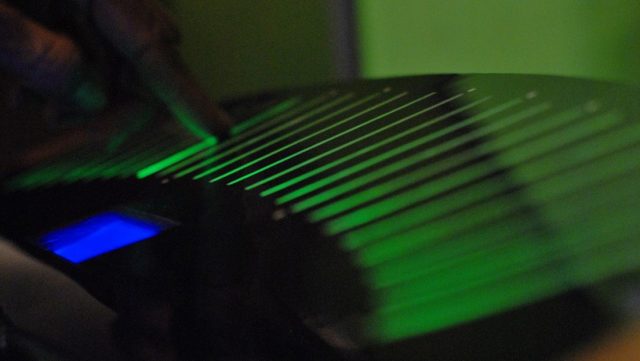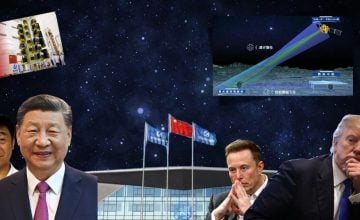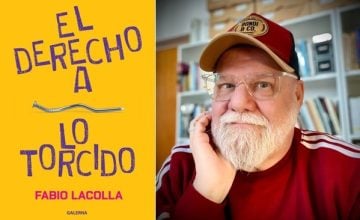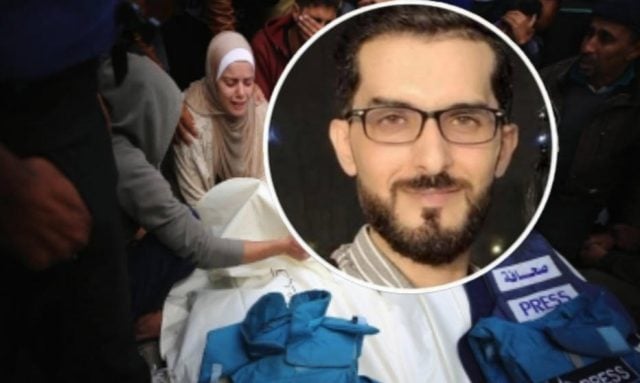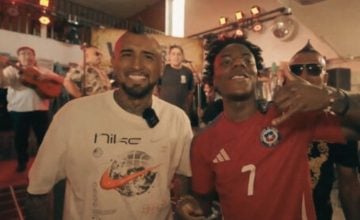Víctor Hernández is a Venezuelan inventor who for the last 20 years has dedicated himself to creating a variety of strange and particular digital instruments to make music, which can be played with touch technology and even, without even touching them.
This creator, a computer graduate and electrical technician, has taken advantage of these skills to give life —together with his family— to the Luthería Digital Ensemble group, in which they experiment with traditional Venezuelan and Anglo-Saxon rhythms, fused with these innovative digital instruments, to recreate an avant-garde style.
Víctor comments that since he was a child, when he lived in his hometown, Barinas —located in the plains of Venezuela— he has been immersed with his family in music. This is how he learned to play the guitar, with which he participated in workshops with teachers such as Alirio Díaz, Aquiles Báez, María Pina Roberti, among others.
Thanks to his inventiveness, in 2002 he traveled to Brussels to represent Venezuela in the 51st edition of «Eureka» -the world exhibition of research and new technologies- with his musical instrument «Laser Harp», with which he won the gold medal of the event and the prize for the «Best invention of a developing country», which was awarded by the World Intellectual Property Organization (WIPO).
At that moment – explains Víctor – the «Laser Harp» was an instrument that could be played without touching it, since it used an infrared ray system that detected the placement and proximity of the hands to change the musical notes.
«It was a harp with laser beams, a didactic prototype with which music could be made, but it had its limitations», says Víctor in an interview with RT. The musician explains that now the instrument has another name and is extremely versatile.
The Arplana
Víctor, who now resides in Valencia, a city in the center-north of Venezuela, says that he improved the initial prototype of the Laser Harp until he reached the current design, which since 2014 has been called “Arplana”, an instrument made by hand with pine wood. and that among its features has stereo audio output, expression pedal input and real-time parameter controls with LCD screen.
«Currently, it is a tactile harp, like cell phone screens work, and it is similar to a keyboard but without keys. It works with several scales that can be modified. It comes in diatonic scale, but can be changed to chromatic or pentatonic. In addition to the sound of the harp, they can be added or changed for others and configured to taste.
The Arplana works with an internal synthesizer and has a sound output in midi format, which can be attached to other instruments that have synthesizers or computerized programs, and that act as emulators.
Víctor comments that when he decided to create the digital harp, he did so thinking of highlighting Venezuela’s identity, because in his country this stringed instrument is the protagonist of the so-called llanera music, one of the most widespread local genres.
“Our family, which comes from Barinas, has always played instruments, since they were little, as well as traditional Venezuelan music. For this reason, I have always believed that it is necessary to highlight what one knows how to do and what is typical of the region from which one is born».
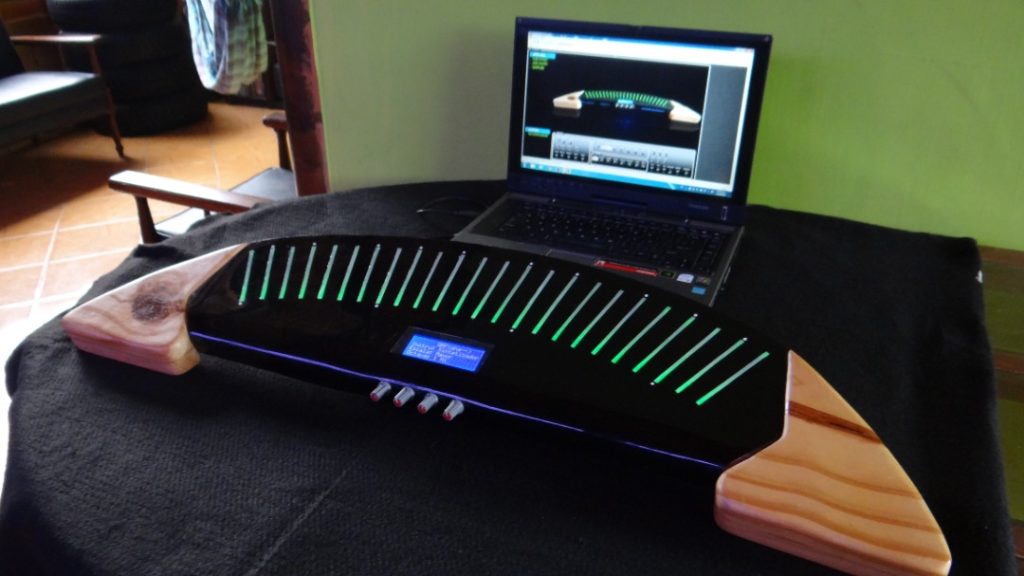
The instruments that do not have to be touched to be played
Víctor’s interest in creating instruments around music has led him to design several instrument prototypes and sound synthesis applications to control digital devices. But his work has not been easy, he has had to face the difficulties generated by the foreign sanctions imposed on the country in the last decade, the economic crisis and the problems to obtain spare parts, which are mostly foreign-made.
However, Víctor continued to create and just as he designed the digital harp, he also created the Percutrón, a percussion instrument with touch technology that he manufactured in 2015, the digital Rain Stick (2011), an analog sequencer (2010), and two prototypes of tactile guitars —without strings— in 2007 and 2009. With these creations he won, in 2015, the Honorable Mention of the National Prize for Popular Technological Invention “Luis Zambrano”, for the “Development of Digital Musical Instruments based on Tactile Technology”.
In addition, he has also designed instruments that do not have to be touched to be played. The first was done in 2004 and it was an infrared light battery that ‘sounds’ by placing the drumsticks —without touching the ‘drums’— at a height and place that the device’s sensors can detect.
Then, in 2012, he created the “Digital Theremin”, inspired by the original by Russian physicist and musician Leon Theremin, invented in 1920 and considered to be one of the first electronic instruments to be controlled without physical contact. “The original works like a radio and records the capacitance between the hand and the antenna. I made a digital recreation that works with infrared light that emits energy and detects the movement of the hands. Then, the amount of energy that returns to the device, due to the proximity or distance of the hand, reproduces a musical note. In addition, it has a blue light that helps to perform the instrument better because the infrared is not visible».
In addition, Víctor’s Theremin has the peculiarity that it reproduces a sound in midi format that is not continuous and goes note by note. «Each note is well tuned to the corresponding hand height and has the possibility of making modal chords depending on the scale being played».
Víctor continues to work on perfecting his instruments while he hopes that some company or public institution may be interested in producing and massifying his creations on a large scale. «I hope in the near future to be able to market them, obtain the support of some institution or company. However, if anyone is interested in obtaining one of these instruments, they can contact me».
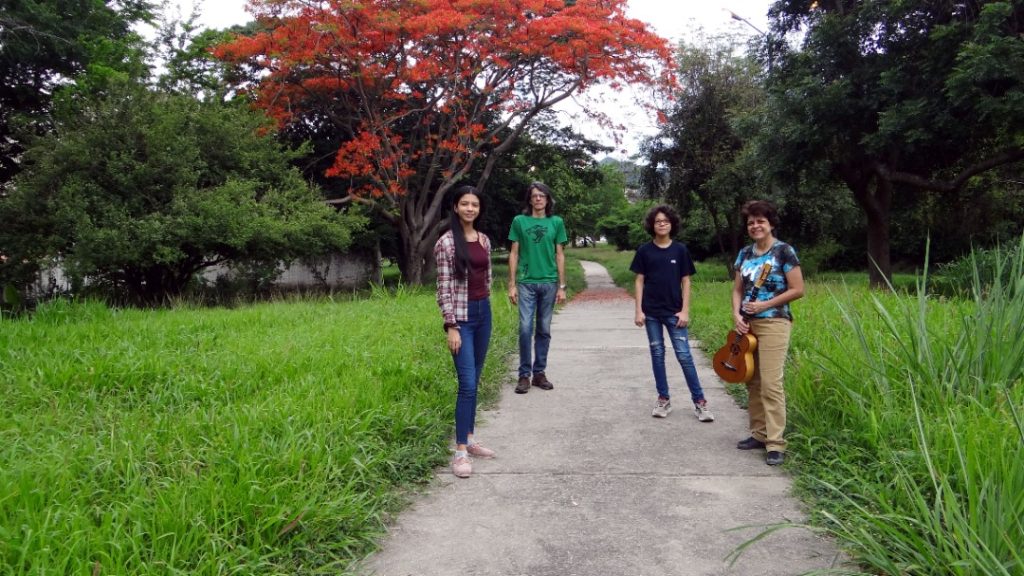
Who integrates the Ensemble Digital Lutheria?
The same passion for designing these innovative instruments and their need to put them to the test has led Victor’s family to use them in versions of rock, pop and classical music classics, which are integrated with traditional Venezuelan rhythms.
This is how the Luthería Digital Ensemble was born, a group created in 2017 and made up of Víctor’s sister, Luisa Liceth Hernández, singer and performer of the ‘cuatro‘ (string instrument with 4 strings), winner in 2004 of the I Festival de la Siembra del Cuatro and with a long career in which she has shared the stage with performers and groups such as Cecilia Todd, Quinto Criollo, Raíces de Venezuela, among others.
The other two members are Víctor’s nephews. Luisana Ortega Hernández, who plays piano, keyboards and the Arplana, has a degree in Music Education, is a professor at the Caracas Conservatory, performer and student of various instruments such as the violin and the accordion. The fourth member is Alfonso Camacaro Hernández, a teenager who shares his high school studies with piano, drums, keyboard and bass. In the group, he plays the maracas and the percutrón.
«We play traditional music in all its variants, llanera, gaitas, aguinaldos, merengues. We do it with a lot of responsibility and desire to spread our Venezuelan identity, always contributing new ideas and elements that enrich it, so that it is more up-to-date and attracts the attention of new generations», says Víctor, who plays guitar and bass in the group. .
“It is exciting to see the public at the end of a presentation. They come to play the instruments, to see how they sound, where the sound comes from, how they are played in the air, which is very striking”, says Luisa.
Alfonso, who is passionate about electronics, computers and the music of Johann Sebastian Bach, says that when he plays the Percutrón, people are amazed by the rarity of the instrument. The «most rewarding and difficult» experiences in the Ensemble have been Luisana with the Arplana, because for her, it has been a challenge to play it without having a technique and a method. Therefore, she has set herself the task of designing one for the future.
«It’s something totally innovative, it makes it even more difficult for me to interpret. However, as a musical pedagogue it is also an honor and a great tool, since it is an instrument that allows people to have an approach to music in a simple way and without having great knowledge”, explains Luisana.
Víctor, awarded in December 2021 with the National Prize for Science and Technology for Popular Technological Invention for a project on the ‘internet of things’, highlights that his group seeks to “innovate, experiment and show the world the positive things that are done in Venezuela». And he points out that although he has not had the economic support or help to record an album and go on a concert tour, he continues to work to show his art and leave a contribution to the culture of his country.
